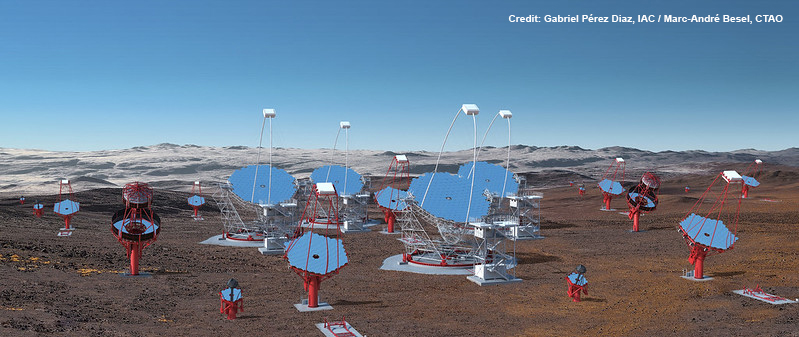
Connectivity can be a major hurdle for global collaborative research organisations. Such initiatives are progressively taking centre stage as humanity seeks to address some of the most pressing challenges of our time and to answer questions about the universe.
What is CTA?
The Cherenkov Telescope Array (CTA) will be the world’s largest and most sensitive ground-based observatory for gamma-ray astronomy at very-high energies, with more than 100 telescopes located on two sites in the northern and southern hemispheres. CTA’s site in the northern hemisphere will be located on the island of La Palma, Spain; the southern hemisphere site will be near Paranal, Chile. Other European locations comprise Germany, where data management will take place, and Italy.
CTA, the first observatory in the world of its type, will be accessible to the global astronomical and particle physics communities and will address some of the greatest mysteries in astrophysics, detecting gamma rays with an unprecedented sensitivity and expanding the cosmic source catalogue tenfold.
CTA and BELLA
An initiative of such magnitude presents its challenges and is faced with considerable obstacles, such as data transfers from Chile to the data management centre in Germany and other traffic flows between Europe and Latin America. Luckily, and thanks to the BELLA programme and NREN collaborations in Latin America, it will be possible to satisfy the infrastructure demands and the large data exchange needs of CTA.
CTA’s South Site is located less than 10km southeast of the existing European Southern Observatory’s (ESO) Paranal Observatory in the Atacama Desert in Chile, which is considered one of the driest and most isolated regions on earth – an absolute paradise for stargazers.
NREN initiatives in Latin America and Europe, with the BELLA Programme playing a key role, are coming together to facilitate the data-sharing and transfer requirements of the CTA.
REUNA, the Chilean NREN, whose backbone has spectrum and fibre currently lit at multiples of 100 Gbps, plans to be able to increase the capacities available by collaborating with CTA to develop connectivity for the last mile and is looking to play a coordination role for the delivery of the required fibre. In particular, the connection between Antofagasta and Santiago is protected with back-up connectivity to ensure maximum service availability which should ensure the uninterrupted data exchange for CTA.
Connectivity delivered by the EU-funded BELLA Programme, consisting of the upgraded RedCLARA backbone from Chile to São Paulo and on to Fortaleza, Brazil, and spectrum on the EllaLink submarine cable system to Sines, Portugal, will carry traffic to the GÉANT backbone, currently being upgraded by the EU funded GN4-3 project. This end-to-end chain will more than provide for the data-transfer needs of CTA between the two regions.
Once data management processes are completed at the Science Data Management Centre (SDMC) in Berlin-Zeuthen, connected to the German NREN, DFN, the data will be made available to researchers, wherever they are, via Research & Education networks across the globe.
Benefits of BELLA
BELLA transforms the data transfer possibilities in Latin America and onto Europe, with capacities hitherto not available guaranteed for many years to come. BELLA also shortens the route between the two continents thanks to the direct route of the EllaLink cable system between Brazil and Portugal.
BELLA therefore fully provides for CTA bandwidth needs for the data transfer between the Southern Array site and European data centres, additionally allowing considerable cost reductions in contrast with connectivity infrastructure that has been available up to the present day.
BELLA connectivity will enable secured and fast transfer to data centres for event reconstruction and rapid access to science data for the scientists who have access to CTA Observing Time and the global community of researchers.
Nadine Neyroud, (off-site) CTA Observatory ICT Infrastructure Leader says: ‘Understanding our universe is one of CTA’s ambitious objectives and projects like BELLA, by facilitating global scientific collaboration, will bring unimaginable and unprecedented benefits to our initiative’.




